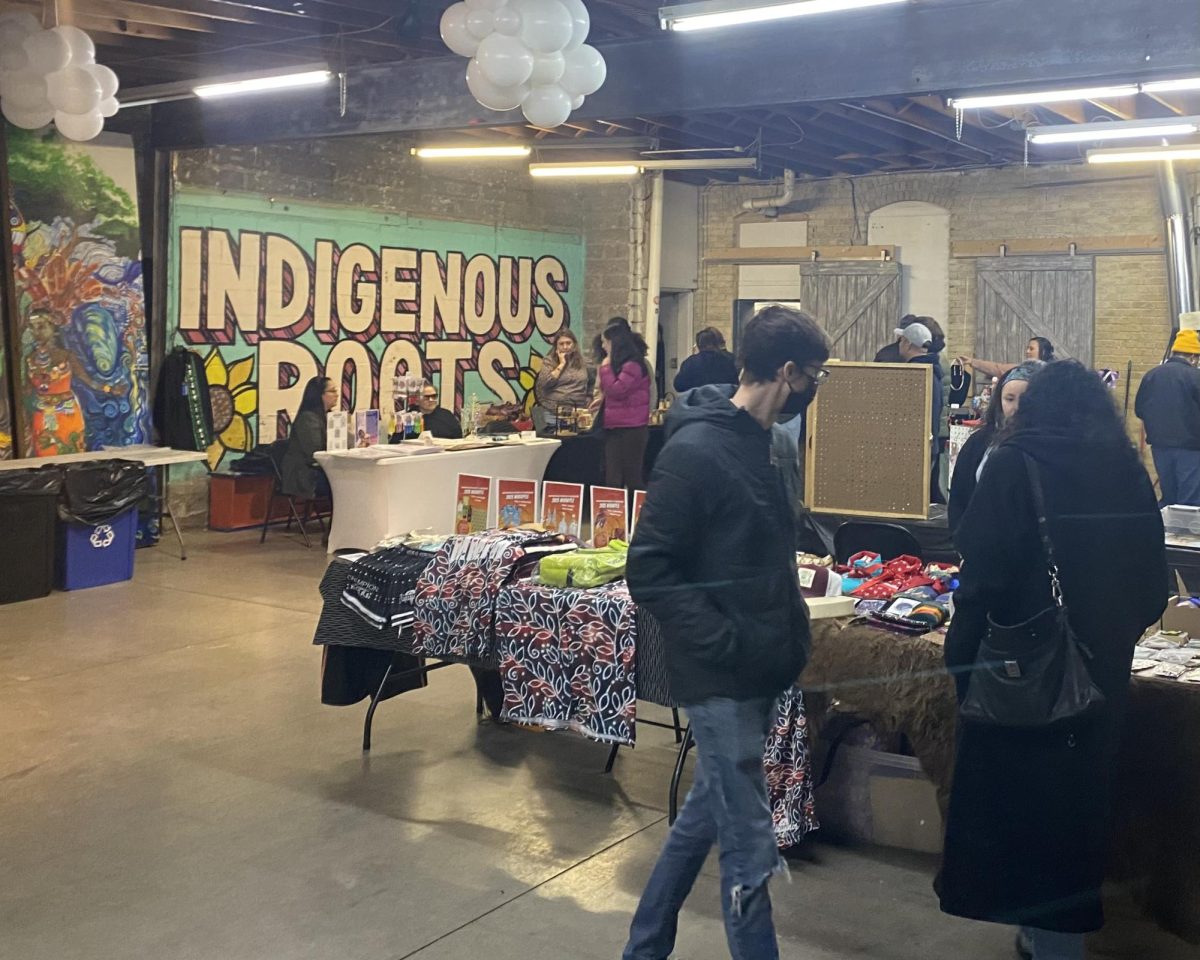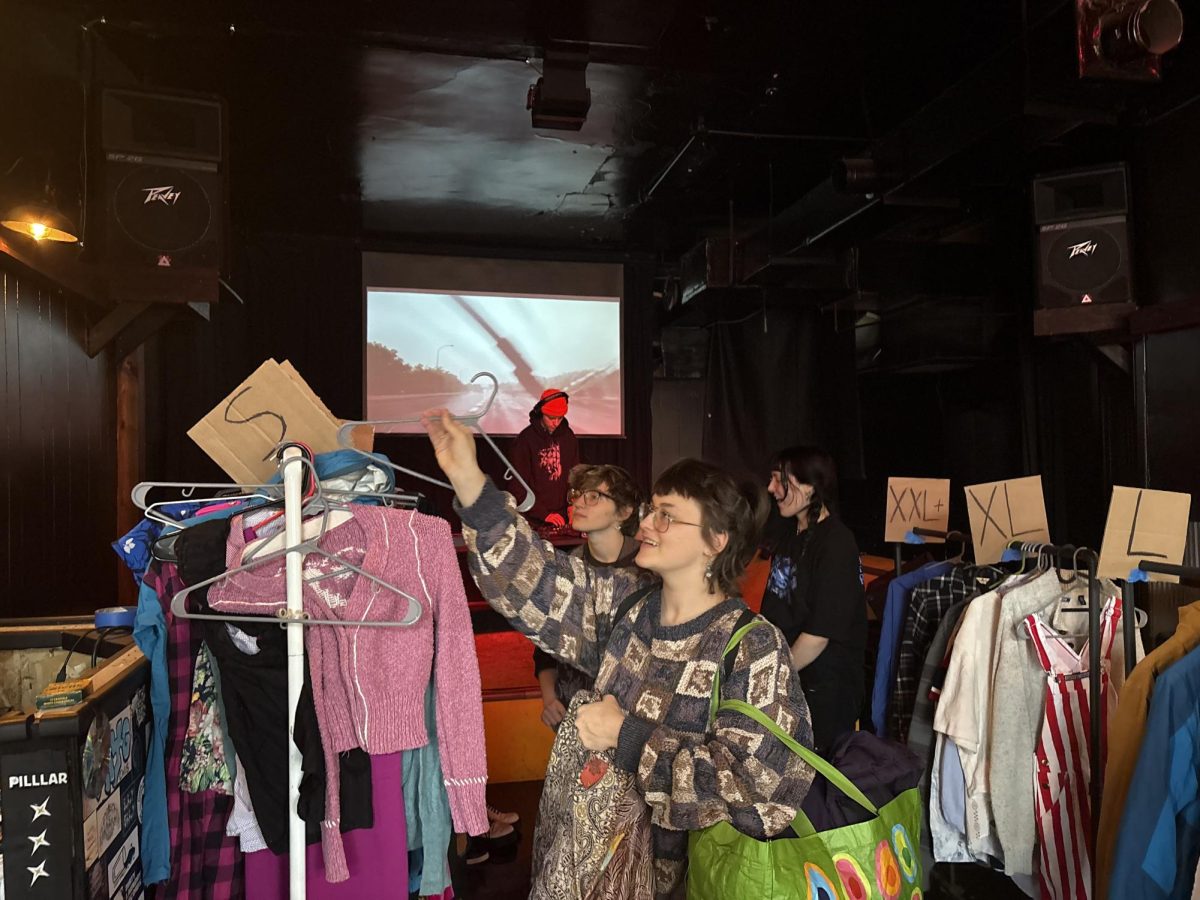Since 1995, when Soap Factory visitors fi rst started to trudge on top of the wooden planks of the ex-warehouse showroom fl oor to view works of contemporary art, the space has ser ved as the area’s third largest contemporar y art house, after the Walker Art Center and the Weisman Art Museum.
However, underneath the old floorboards lies a different world, one traversed by Soap Factory volunteers and personnel only when absolutely necessary. Low visibility, darkened hallways with hidden crannies, giant crematorium rooms, old elevator shafts and layer upon layer of dusty grime combine to create an eerie, underground industrial romp. The dwelling reeks of disquieting isolation.
In the old warehouse basement, the origins of motion are obscured. You can’t quite tell where the light, movement or noise comes from. The stench is a mixture of decades-old soap remnants, cobwebs and dust.
Sounds like the perfect place for a haunted house.
Soap Factory Haunted House
WHEN: from dusk until 10:30 p.m., Oct.28 though 31.
WHERE: The Soap Factory, 520 2nd St. S.E. Minneapolis
TICKETS: $5 Saturday, $10 Sunday through Tuesday. 18-plus
For the past month, local artists Aaron Wojack and Chris Pennington, along with a slew of volunteers, have been tweaking the already foreboding space, transforming it into a full-scale terror complex.
On Sunday afternoons they meet at the Soap Factor y – often with Shipyard Brewing Company’s Pumpkinhead beer nearby – and descend into the basement to hammer, cut and hang.
The building, constr ucted in 1882, is one of the oldest unconverted warehouse spaces left in Minneapolis. It squats on a patch of overgrown land on St. Anthony Main. The 50,000 square-foot warehouse seems to squint and sag toward the weedy railroad tracks that line the banks of the river. Dingy windows give the site-specifi c art space a feeling of antiquity – or a shabby space doomed to be rat fodder.
In the 1930s, National Purity Soap and Chemical Company bought the warehouse and turned the place into a soap factory. Among its other uses, the space produced sausage casings from cow intestines.
In the soap-making process, tons of rendered animal fat from horses and other farm animals was hauled into the building. When No Name Exhibitions (later renamed “Soap Factory”) received the building in 1988, the space wasn’t exactly rid of its mucky past.
“We had to pressure hose a sixinch- thick layer of congealed animal fat off the manufacturing floor,” said Soap Factory executive director Ben Heywood.
This may begin to explain why gallery workers and previous employees have been hesitant to go into the basement. Over the past 80 years, there have been accounts of people hearing various animal noises -growling and galloping – coming from below.
The building’s mixed history lends it a rare ambiance, one that will play into the fears that come along with old, decaying warehouses.
“We’re tr ying to tap into ever yone’s fears,” said Nicole Macklem, who is helping to prepare the haunted house.
Visitors will be given dim lanterns, only one per group, and sent out to explore the basement space.
During the day, only small streams of light shine through the dilapidated roof cracks. At nightfall, darkness envelopes the sprawled rooms and musty corridors. Dancing, hissing shadows leap onto the walls. The cluttered space of useless room fixtures and forgotten art debris fill the room with an anxiety over what could be hiding.
“Everyone is going to come down here with some fear. Either they’ll be claustrophobic or afraid of spiders or the dark. Either way, those fears will come out,” explained Carmon Riese, one of the volunteers.
Like a great horror film, the Soap Factory plans to make use of a layered soundtrack to compliment the visitors’ journeys. They have acquired the assistance of sonic expert Benji Conklin to help them.
“There are patterns that sounds fall into that create fear or create safety,” Pennington said. Apparently, Conklin scared himself in the studio while creating the soundscape.
Despite this parallel to cinematic style, they are trying to keep Hollywood frills out of their horror production.
“We wanted to avoid anything canned, like a traditional haunted house,” Pennington said. “This one is more psychological. It’s more like ‘The Shining,’ less like ‘Scream 3.’ “
It takes a lot of strenuous effort in order to exploit people’s vulnerabilities and manipulate their deepest fears. A proper environment is required in order for the diabolical forces to properly manifest themselves.
That environment is composed of a haphazard grouping of objects: gorilla tape, chicken wire, tarp, plastic sheeting and sloppy pots of papier-mâché paste, to mention a few.
The fear of a haunted attraction emerges from the complex discomfort that humans have with the paranormal. We occupy a realm of existence between the material and the spiritual worlds, and horror taps into primal fears of isolation, insanity and the threat of bodily violence.
In short, it is our own mortality that is at stake, or the illusion of it.
We achieve a level of euphoria upon conquering something that seems threatening, even if it poses no real risk to us. It is the illusion of fear, the flirtatious violation of our bodily space that is the most frightening.
The tactile, visceral phenomena will aid and abet the experience of discomfort with the surroundings. Subtle changes in atmosphere, fluctuations in temperature, air currents, lighting and low-frequency sounds, which are inaudible but can cause vibrations in objects, will all work together to give visitors a run for their money – literally.
People like to experience strong emotions and fear is one of the strongest we have. However, the experience must be controlled and there must be a reprieve. The potential for fear needs to be there, but it cannot be constant or it becomes tiring.
The key to a successful haunted attraction is assuring that the surrounding world is uncertain and unstable.
“It’s not going to be like a normal haunted house,” Pennington said with a smirk. “It’s self-guided. It’s an abandoned building. It’s just different – people are going to get an experience out of it.”
Ghostly Riverbanks
The St. Anthony Main Riverfront area, upon which the Soap Factory was built in the 1880s, and the old mill areas that dot the urban Minneapolis riverbank are notorious for their sketchy and morbid past.
Local historian Penny Petersen, who is currently writing a book on Minneapolis’ historical red-light district, claims that the city of Minneapolis has an inability to deal with its gritty history.
“A lot of stuff concentrated on the riverfront was both alluring and fear-producing,” said Petersen.
She described the depression-era Main Street as gathering place for the unemployed. The alleyways and avenues of the downtown riverfront became squalid crevices in which the lower classes lived and worked. Bordellos – a fancy name for whorehouses – were scattered along the boardwalks next to dive bars and boarding houses known as “three hots and a cot,” Petersen said.
Drunks wandered skid row in search of tomfoolery. Junk floated around in the river and flour dust from the nearby mills hung in the atmosphere. Many mill workers caught white lung disease as a result of overexposure.
The mill, especially on the night shift, turned out to be a deadly and mortifying place. The loss of life and limb were commonplace.
In 1978, the Washburn “B” Mill exploded, shattering windows on Summit Avenue in St. Paul. According to David Stevens of the Mill City Museum, the blast killed 18 workers and destroyed half of Minneapolis’ milling capacity overnight.
In fact, there was so much grotesquerie that occurred on the mill shifts, Stevens said, that “Minneapolis became a leader in the production of artificial limbs in the 19th century.”
A Cultural History of Horror
For centuries, humans have been obsessed with haunted happenstances, ghostly apparitions and monsters of regional folklore.
However, the rise of the mass media and Hollywood culture machine stretched the boundaries of the horror genre to the extreme. American horror has its roots in the Gothic literary genre, as well as the spectacle of the traveling circus sideshows in the 19th and early 20th century. What began as a sprinkling of Poe and a dash of Lobster Boy grew into a century-spanning empire of gory glory.
The advent of cinema brought all the foreboding creatures of old world literature to life on the big screen. The silent era of film in the 1930s produced vampire flicks like “Nosferatu,” which dealt with repressed Victorian sexuality, other macabre connections between lust and death and reflected anxieties of intimacy and spread of disease. The renewed contemporary interest in vampiric lore (think Lost Boys, Brad Pitt and Buffy), some scholars say, is emblematic of our societal fears surrounding the AIDS crisis.
Frankenstein’s monster, the quasi-humanoid popular in 1940s golden era films, screams science experiment gone wrong. This creature straight out of the lab invites us to critique the advantages of science and ambition. The monster is a critique of modern “progress.”
Then came the atomic-era, invasion-scenario creatures like Godzilla, King Kong and Creature from the Black Lagoon.
Ed Gein – the serial killer from Wisconsin who ate soup out of human skulls – was Hitchcock’s ambition for the 1960 hit “Psycho.” From there, all hell broke loose as serial killers became fetishized celebrities in countless slasher films.
Over the years, slasher films and rock ‘n’ roll have engaged in an intimate, somewhat incestuous relationship. Pink Floyd’s video for “Another Brick in the Wall” (as well as a “Tales from the Crypt” comic strip) epitomize the scares of cookie cutter consumerism and big beef through their renditions of humans being shoved through meat grinders to make hamburger.
David J. Skal, a scholar who is as crucial to the horror genre as Tim Burton is to Goth kids, argues that horror serves as a pop cultural counterpart to 20th century art movements such as surrealism and expressionism. In his book titled “The Monster Show: A Cultural History of Horror,” he also explains how body-morphing special effects in horror films correlated with the rise of plastic surgery technology.
Representative of the taboos of the society that spawned them, monsters occupy more than just a special place under the bed.
These lurking creatures and the horror media that grows out of them are highly indicative of our own psychic anxieties, sensibilities and technologies unique to an era. Whether masked, faceless or mutilated, any monster that hits the box office or knife-wielding maniac taking up space on TV, you can guarantee that we see ourselves in that same face.







